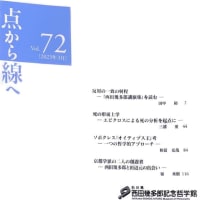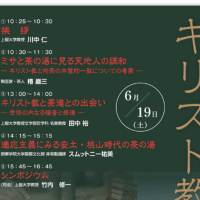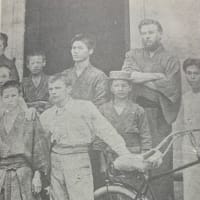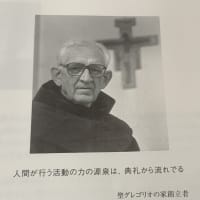ーNarrating the Death and Life of Hosokawa Gracia
Yutaka Tanaka (Prof. Emeritus of Sophia University)
( a summary of the lecture at St. Gregorian House)
The death and life of Hosokawa Gracia, who lived in two worlds, Christianity and Bushidō (the moral way of Samurai), has been the theme of many historians, novelists, and dramatists since the Tokugawa Period in Japan. In 1686, the neo-Confucian Hirotada Kurosawa published “Biographies of Valiant Women in Japan” and praised “the noble wife of Hosokawa Tadaoki” who had committed suicide for her husband’s sake as a “paragon of valiant loyalty”. The fact that this lady had a Christian name “Gracia” was completely ignored by Hirotada, because he wrote this narrative after the Amakusa Rebellion reflecting the strict repression of Christianity.
On the other hand, the name of “Gracia(or Gratia)” was known to the 17th century Europe through Jesuit missionaries, and Cornelius Hazardt’s Ecclesiastical Annals (1678) narrated her biography, as “Queen’s Conversion in Tango and her Christian Virtues”. After this biography, the musical drama, Mulier Fortis (Valiant Lady), was written by Johannes Baptist Adolph and composed by Bernhard Staudt. This musical drama was staged in the theatre of Jesuit Gymnasium at Vienna in the presence of the Austrian Emperor (Leopold I) and his family (1698).
In Mulier Fortis, Gracia was depicted as the queen who accepted her death as a Christian martyr, but not as a woman who committed suicide. The invariable faith of Gratia enduring hardships was the central theme. The scene of her death in this drama was not staged directly, but was only narrated indirectly as her feeble body’s death caused by severe torture.
In spite of many historical inaccuracies such as the inexact date of Gracia’s death, Mulier Fortis was consistent in observing the Christian law forbidding suicide, but at the same time it praised Gracia as a “valiant lady” having practiced the Christian way of life, or Imitatio Christi. Owing to Christ’s Life over Death on the Cross, she was able to accept her death serenely. The following monologue of Gracia (Act I, Scene V) is very impressive:
O culpa felix! Pro deo si sim rea, Non bene saluti consulam auxilio fugae. Hic esto fortis, Gratia, hic standum tibi! Tota solutes orcus, Eumenidum manu, In me recumbat; corde non tollet deum.
(O blessed crime ! If for God’s sake I am guilty, to look solely to my own welfare by fleeing adversity would be wrong. Here you must be valiant, Grace. Here you must stand firm! Though the gates of Hell stand open and its band of Furies come against me, still shall God remain fixed within my heart.)
The above lines reflect the contemporary reports of Jesuit missionaries in 17th century, and expresses very convincingly the reason why Gracia did not escape from hardships but accepted martyr’s death following the way of Christ.
Among many dramas written in Japanese after the Meiji Restoration, “Hosokawa Gracia” written by Herman Heuvers in 1940 is remarkable in his deep knowledge of Japanese cultural tradition. This drama was adapted and composed by Vincenzo Cimatti as an opera, first staged at Tokyo Hibiya Public Hall in 1940, and recently revived at the Chofu Green Hall in 2016.
The opera “Hosokawa Gracia” by Gimatti consists of “three movements” imitating the style of the traditional Noh Drama in Japan: Jyo (the first), Ha (the second), and Kyu (the last). The first movement is called “Lotus Flowers”, the second “Cherry Flowers”, and the third “Heavenly Flowers”.
Adopting the “Aesthetics of Flowers” originally invented by Zeami (the most famous Noh composer & theorist in the 15th Century Japan), Lotus flowers symbolize “purity in filthy water”, cherry flowers “none-attachment of self-sacrifice” and heavenly flowers “glorious beauty beyond tragedy”.
The flower image in this drama also reflects Gracia’s own tanka poem composed just before her death:
Knowing the providential time of falling
In the midst of the world
Flowers become what they are
The person becomes who she is!
Cimatti’s opera has been often characterized as “the first opera sung in Japanese”, but more aptly and spiritually speaking, it may be called “the first opera of Christian Martyrdom deeply rooted in the soil of Japanese culture.”























